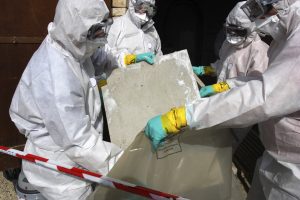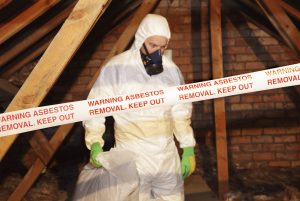Why was asbestos used?
28th February 2018The dangers of asbestos are widely known today, but until the UK banned the material, it was extensively used across many sectors, particularly in the construction industry.
Breathing in asbestos fibres is unlikely to cause immediate harm – but the long term effects are prolific, and generally occur many years after exposure. The main cause of mesothelioma (cancer of the lungs and abdomen), as well as asbestosis, lung and pleural disease, is repeated ingestion or inhalation of asbestos fibres.
This begs the question – how and why did such a hazardous material come to be so widely used in our day-to-day surroundings?
What is asbestos?
Asbestos is a naturally occurring mineral, present across many countries in the world, and mined from beneath the earth’s surface. Asbestos was first used from the 1700s onwards, before the highly dangerous, carcinogenic properties were fully known. However, from the first recorded death in 1906, it took nearly a century for a complete ban in the UK, which came into place in 1999.
There are six different types of minerals that make up asbestos, and all share similar characteristics, and are composed of millions of microscopic fibres arranged in layers. This layered structure is what gave asbestos key properties that made it so versatile – predominantly its lightness and durability.

Properties of asbestos
Until more recent decades when stricter laws came into place, and eventually the UK’s complete ban on asbestos products, it was widely used due to its following properties:
- Withstands extreme heat
- Chemical resistant
- Insoluble in water; the fibres do not evaporate or dissolve
- No detectable odor
- Tensile strength (ability to resist tension) is higher than that of steel
- Can be easily manipulated: spun into fibres or binded with other materials
Uses of asbestos
The above characteristics of asbestos, unfortunately, have meant that it lends itself dangerously well to a variety of applications. Some of the products asbestos was used in before it was banned in the UK include:
- Fire proofing
- Insulation
- Roof materials such as tiles, felt, vinyl floor tiles, wall coverings and lay-in panels
- Cement, pipes and other essential building objects
- Friction resistant products – particularly on car brake pads and clutches
- Packaging materials for industrial products, such as chemicals
- Adhesives, thermal tapes, putties used in construction
- Textile products; protective clothing, blankets, fireproof gloves and used to make threads and yarns
- Consumer products – toasters, irons, portable heaters, hair dryers, dishwashers and stoves

Asbestos today
Whilst the UK banned asbestos and its products in 1999, many buildings built before the laws regulating the substance came into place (throughout the 1970s and 1980s), were built using asbestos products. Countries such as India, China and the USA also still use asbestos products.
As recently as the June 2017 fire at Grenfell Tower, it is said that harmful asbestos fibres may have been released as part of the plume of smoke. This is an extremely sad example of how asbestos exposure can affect those in society who are most vulnerable, and most hard working – such as firefighters, construction workers and many other industrial occupations, such as plumbers, electricians, roofers and power plant workers.

Here at Asbestos Waste Solutions, we recognise the need for a fully safe, reliable and environmentally responsible approach to collecting and disposing of asbestos products. Founded in 2009, and with over 20 years of experience prior to that, our experts provide a fully comprehensive, accredited service that you can rely on.If you think you may be at risk, or simply require more information, contact our professional team today to chat to one of our friendly advisors.
This entry was posted in Industry News. Bookmark the permalink.

 Follow
Follow